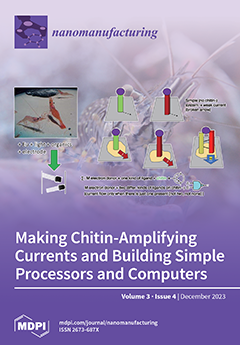Open AccessArticle
Nanoimprinted Hierarchical Micro-/Nanostructured Substrates for the Growth of Cardiomyocyte Fibers
by
Michael M. Mühlberger, Sonja Kopp, Alison A. Deyett, Markus Pribyl, Michael J. Haslinger, Anica M. Siegel, Philipp Taus, Elena Guillén, Aranxa Torres-Caballero, Bozhidar Baltov, Michael A. Netzer, Sonia Prado-López, Leif Yde, Jan Stensborg, Sasha Mendjan, Steffen Hering and Heinz D. Wanzenboeck
Cited by 2 | Viewed by 1355
Abstract
Investigating the behavior of cardiomyocytes is an important part of drug development. We present a structure and a related nanoimprint-based fabrication method, where the cardiomyocytes form isolated fibers, which is beneficial for drug testing, more closely representing the structure of the cardiomyocytes in
[...] Read more.
Investigating the behavior of cardiomyocytes is an important part of drug development. We present a structure and a related nanoimprint-based fabrication method, where the cardiomyocytes form isolated fibers, which is beneficial for drug testing, more closely representing the structure of the cardiomyocytes in vivo. We found that channel structures with walls with a rough top surface stimulate cardiomyocytes to form such fibers, as desired. Nanoimprint lithography is used as a fast and cost-efficient method to fabricate our hierarchically structured cell growth substrates.
Full article
►▼
Show Figures



